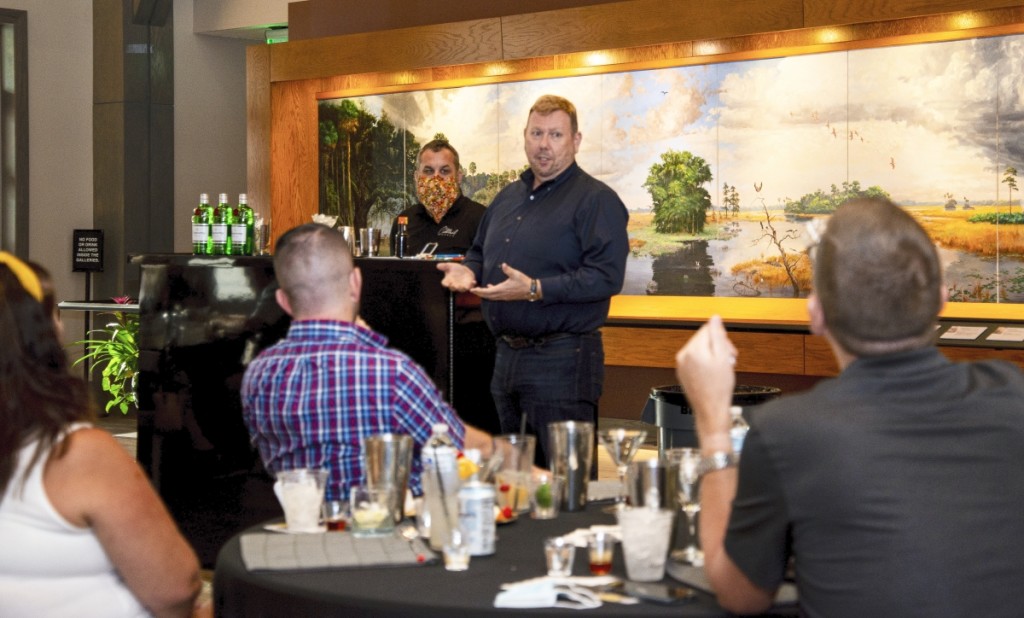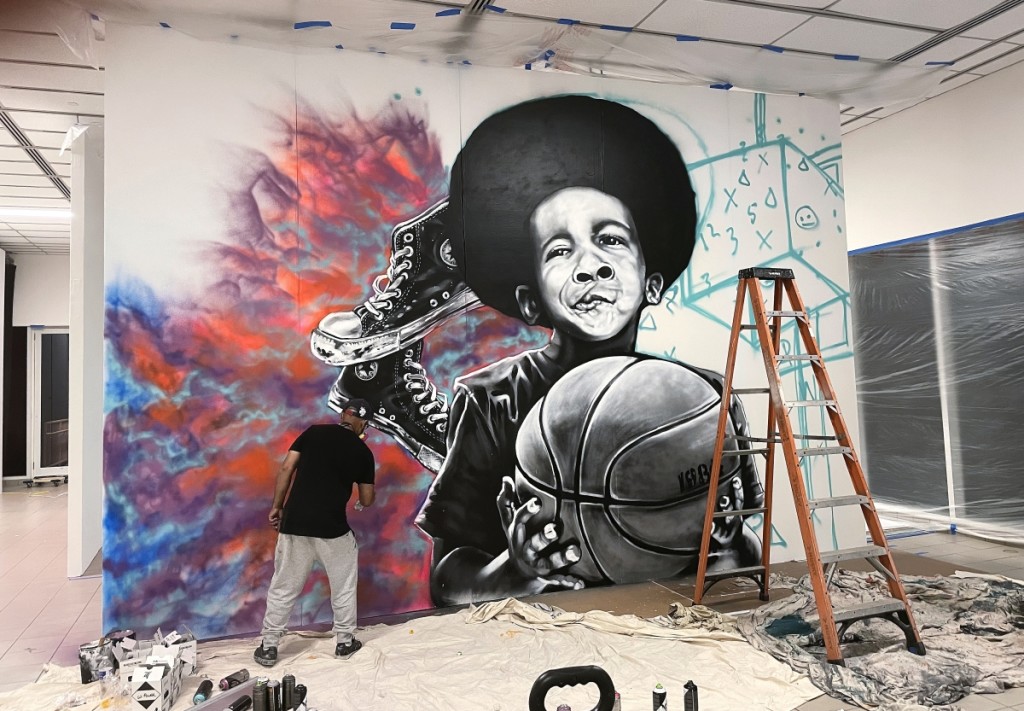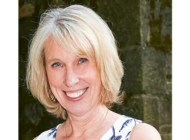The Morris Museum, a Smithsonian affiliate, is getting a new president and chief executive officer to succeed Dr Cleveland Johnson, who will retire at the end of the year. Andrew Sandall, currently the executive director of the Museum of Arts & Sciences (MOAS) in Daytona Beach, Fla., will be taking the helm at the Morris in early 2022. We sat down with Sandall to ask about what he brings to the museum team and his thoughts on what initiatives might capitalize on the museum’s theme of art, sound and motion.
The Morris Museum is known for its historic Murtogh D. Guinness collection of mechanical musical instruments and automata, as well as for offering programs in film, jazz and live performances. What is it about this unique focus that prompted you to take this job?
I finally must admit to myself that I’m drawn towards eclectic museums! I think the museum being “unique” is something that drew me to this position, not just in terms of the collections and programmatic areas you mention, but also the region it serves and the opportunity that brings.
Aside from such unique collections as the Guinness automata, the museum has some amazing spaces that give us great opportunities for exhibits and programs, and it really felt like there weren’t many boundaries or restrictions to the potential for the Morris Museum to serve its community. It’s exciting to be moving to an organization that has so many of the pieces already in place to really push on in some exciting directions. It’s going to be a lot of fun seeing what we can do there!

The music of the Smithsonian Jazz Masterworks Orchestra (SJMO) sets the tone
in the Root Family Auditorium at the Museum of Arts & Sciences
for the 9th annual Passport Gala fundraising event.
In announcing your upcoming arrival, board chair Edward von der Linde described you as a “nonprofit entrepreneur and visionary leader.” Can you provide a couple of examples of your innovative thinking?
That was very kind of him to say that! It was interesting for me throughout the selection process to talk with the trustees and staff about what kinds of things we’ve done down here in Florida.
We serve a unique audience, where there are so many other things people could be doing other than visiting a museum. One of the key things I’ve really pushed at MOAS is to have multiple ways for people to use and get comfortable visiting the museum, even if those start with purely social events that break the barriers down for them. I remind the MOAS staff that in a community like ours we are very likely the first museum some of our visitors have ever been to, and we have to understand that walking through our front door for the first time is a big deal for many people.
We’ve made sure that experience is as welcoming and accessible as possible. At our core, we’ve had the key educational programs that most museums have going on, like exhibits and talks. But we’ve tried to maximize programing using all the resources we have at our disposal, whether that’s our yoga classes in the main gallery of our Florida art museum, or a cocktail reception and live music followed by a viewing party for the latest rocket launch in our planetarium. Ultimately, the key to our success has been finding ways to get people seeing the museum as fun with plenty to offer them no matter how deeply they want to explore our educational or academic offerings.
Getting people through the door for the first time and realizing the museum is a place for them and where they can meet like-minded people has been crucial to us growing.

Attendees of the Cocktail Works series at the Cici and Hyatt Brown Museum of Art enjoyed an interactive class guided by Mark Woods, aka The TikiTender | Founder of Fun Coast Bartending, with a presentation from MOAS executive director Andrew Sandall.
You are credited for having successfully grown the resources and audience base at MOAS during your nine-year tenure as executive director there. How did you do this?
The steps I previously mentioned were absolutely what we needed to do to get the ball rolling on growing the museum. At the end of the day, we had to create the vibrancy and buzz that would excite people and make them want to check out what the deal was at MOAS. This started the process and got these new visitors to look at the other things we offered and got them more deeply involved – hopefully becoming members and donors. In terms of growing our audience, I realized early on that we had lots of programs and exhibits that were being driven solely by the staff and what they thought the museum should be doing, but with very little input from the community. I had inklings of what was going on, but it was during our strategic planning process in 2016 that I was able to bring community members in to conduct a survey on their feelings about what the museum was doing well and doing poorly. I was also able to bring in business owners that were our competitors for our visitor’s time, and not just from other museums or cultural organizations. That armed me with a lot of information to be able to take to our board and staff about where we were poorly aligned with the community’s needs. We were able to cut many of the programs that they didn’t care for and bring in new ones that they thought we should be doing, which thankfully people supported in droves! That also allowed me to reposition the role of the museum with our higher-level donors, trustees and local businesses who sponsored us, and rather than talking to them about our art or collections or educational talks, I was able to demonstrate to them just how valued we were in the community. It took a lot of work and a lot of faith to build this community, but it opened a whole new world for us where you didn’t have to have a specific interest in art, science or history to realize we were a good organization to be visibly supporting.
You also had a leadership role at the National Railway Museum (NRM) in York, England. What brought you to that experience?
It was my first “proper” curatorial role after completing my masters degree, even though at that point I’d already got several years of museum work under my belt at smaller museums. I moved to the NRM from a tiny volunteer-run community museum in a town close to my home to one of the largest industrial museums in the world that daily was defining best practice for the industry.
I got to work on some amazing projects and with world class collections – I was the assistant curator of the photographic collections, which numbers more than 1.75 million images, largely on glass plate negatives – but I also got to see first-hand just what museums were capable of when given that level of funding and with the kind of technical proficiency that the staff had. What’s funny about my time there is that I went into the job absolutely determined to be a curator for life, as that was what I had really enjoyed about my other museum positions. At NRM, I found myself put on project teams where I started to really enjoy being involved in seeing the work through to completion rather than just having a role giving curatorial input. I must have had something of a skill at it because after a short time, I was being requested to be the curatorial representative on many museum-wide projects, and even some coordinated by the Science Museum and National Media Museum, the other two sites that made up the National Museums of Science and Industry group back then. So, it was at the NRM that I started to realize what really excited me – working on the bigger picture, and that museum administration was more my thing than working with just the collections.
We see the current fascination in the art world with non-fungible token works that are bringing high prices at auction. Technology now seems to be a key influence that’s driving and inspiring contemporary work. Drawing on your experience at MOAS, what are your thoughts on the intersection of art and science?
It’s been interesting to watch the rise of this and see how quickly museums started to be contacted by people trying to get them to allow their artworks to be used for this purpose. At MOAS, I had a brief spell where I was getting multiple emails a day from people asking us to consider partnering with them. It certainly seems that some artists have been seeing financial returns from jumping on this quickly, but I would want to see the more long-term issues of this play out before thinking it prudent for a museum to jump in. As a museum of art and science, we were more traditional in our thinking when it came to mixing the two. Having a planetarium at our disposal was useful and we did some quite innovative programming where we could take art in our collections and discuss it through a scientist’s lens, particularly in Florida where the weather can be volatile. Showing the scientific phenomena behind the legendary sunrises, sunsets and our sometimes violent storms up on the dome with real-time satellite imagery made for some interesting programs.
What do you see as your immediate task when you take up your role at the Morris?
I intend to be asking a lot of questions and doing a lot of listening! I’ve been transparent throughout the hiring process that I take a very methodical approach to my work and am not one to jump into decisions lightly, especially with an organization like the Morris that is so well established and has been doing such great work. I’m sure a few decisions will need to be made quickly, and if I spot issues that need immediate attention, we’ll get onto those, but overall, I intend to learn as much as I can about the museum and its work. Alongside that I can’t wait to get out and about in the community and learn what people want the Morris to be for them, and how we can best serve them.
In 2019, the Morris Museum was selected by the Smithsonian Institution to join its Smithsonian Affiliates network, which comprises more than 200 institutions across the United States. What do you see as the primary benefit of that association?
It feels quite fitting for me to be moving from Florida’s first-ever Smithsonian Affiliate to take the reins at New Jersey’s! The Smithsonian Affiliation is a great thing to have and thankfully I have a lot of experience making it work for MOAS, as well as some great contacts at the Smithsonian, who are looking forward to me being within driving distance now. There is such a great network of free content we will be able to tap into, including films and speakers, and we’ve done a lot of work utilizing loans from their collections to add some special quality to many of our exhibits here in Florida. There will also be many opportunities for staff development that I hope we can exploit.
Given the reputation the Morris Museum has for its jazz programming, it should be no surprise to learn that I’ve already had several conversations with my friends in the Smithsonian Jazz Masterworks Orchestra, who have been coming to perform in Daytona Beach annually since 2011. It was definitely a draw for me when looking at the opportunity at the Morris to see it was already an affiliate as if it hadn’t been it would have one of my suggestions.
Since its inception in 1913, when objects collected for display in a curio cabinet at the Morristown Neighborhood House formed the beginning of its collection, the Morris Museum has had a strong educational focus. What are some of the current trends in museum education that can be applied to outreach to school-aged children?
It’s an area I definitely see as a priority for the museum as we move forward, and hopefully as visitation starts to rise again post-pandemic, including the return of school field trips, an area of our work we can start to build. Having the Spark!Lab is a great addition to the museum and something I think will continue to be a big hit with families, but overall I think my goals would be to diversify the range of educational experiences and programs to give more opportunities for people to experience the museum. A lot of the decision-making process we had at MOAS when considering our exhibit schedule was what suggestions had the best opportunities for programming around, and often that would be the tiebreaker between two equally good suggestions. While the collections are often the heart of the museum, its educational programming that can be its soul, and from my experience, can be what makes an average museum a great, well-supported one.
Although you spent considerable time in the United Kingdom, getting your masters in museum studies from Leicester University, you are no stranger to Morristown, N.J., having served as director at the nearby Museum of Early Trades & Crafts and executive director of Friends of the Hermitage in Ho-Ho-Kus. What are you most looking forward to in reconnecting with that community?
It’s exciting to be coming back for sure, and I’ll admit it felt a little strange when I came up to the area during the interview process. To be back in the area where I lived and worked for the first time in several years and to see how the places all looked the same, albeit with new signs and names on many of the storefronts and the occasional big housing development sitting in what had been open land I passed so many times on my drive into work. While I’m familiar with the area, there is definitely lots of learning to do to get myself up to speed with how the community has changed. I think most of all what I’m looking forward to is being back here now with all this experience of life in the United States behind me. When I first lived in the area, I was a new immigrant to the country and had much to learn and would admit to being overwhelmed at times both personally and professionally as I figured out how my life here would be, and how my career would go. With almost 18 years of life in the United States behind me, I’m excited to see how it feels living back in New Jersey now I’m more confident and understand life here more.
Any regrets about leaving the land of sandy beaches and NASCAR behind?
You forgot Disney! It will take some adjusting to not being able to go walk on the beach on Christmas or Thanksgiving morning, but I don’t think I’ll leave Florida with regrets, just happy memories. I sometimes forget I’ve lived in Daytona Beach longer than anywhere I’ve lived before, other than my hometown back in the UK. I’ve made a lot of great friends here who I’ll miss a lot, but naturally they are already trying to set up the visits to come and see me up in Jersey and get over to New York City. It’s also nice to know that if the Jersey winters get too much for me, I have plenty of places down in Florida that are just a flight away where I can head down for a weekend to thaw out!
–W.A. Demers







